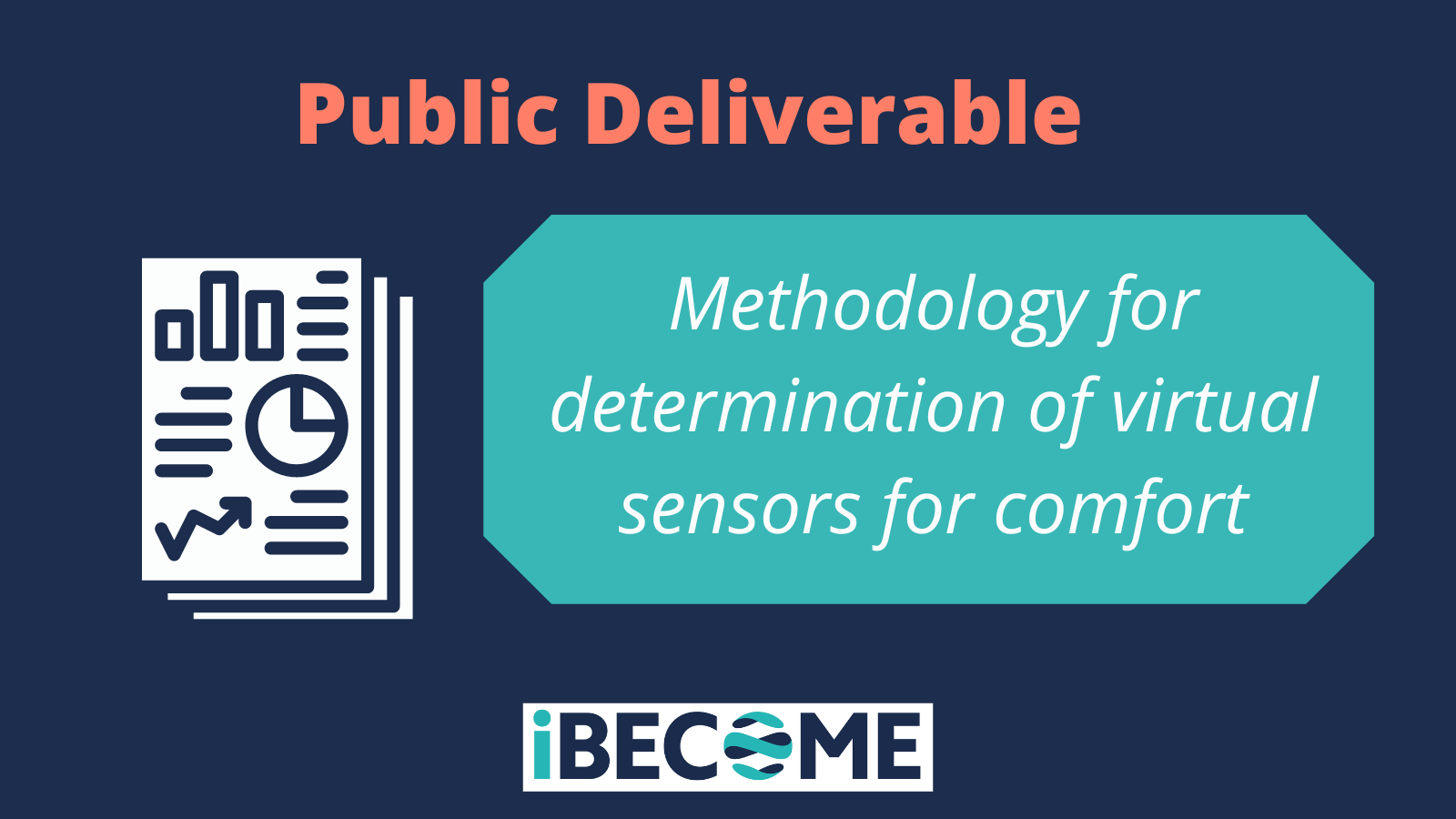“Methodology for determination of virtual sensors for comfort” is a deliverable of iBECOME H2020 project focused on showcasing the work that has been achieved towards identifying and calculating appropriate Indoor Environmental Quality metrics.
First, thermal, visual comfort and air quality metrics have been determined following a specific methodology. Based on iBECOME partners experience and a state-of-the-art review of standards and publications the most representative metrics and indicators to describe and characterize occupants’ comfort in a building have been identified. These metrics have been reviewed and assessed in terms of popularity and relevance to the iBECOME objectives.
Then, based on the exhaustive list of metrics and indicators a second selection has been conducted relying on several criteria such as the cost or the difficulty to deploy real sensors but mostly on the capacity of Machine Learning Techniques to calculate and predict them.
Several Machine Learning techniques have been ranked towards their accuracy to predict the comfort metrics. A real case study has been used to generate datasets using advanced building energy modelling techniques and use them to identify the most accurate calculation methods for each metric.
In terms of thermal comfort, the most accurate thermal comfort model has reached the prediction accuracy of 84%, which is a significant improvement comparing to other methods. To enable visual comfort within a room, we have studied the capabilities of machine learning algorithms to predict illuminance and glare when combined with physics-based simulations including daylighting and blind positions of a window within a room. Additionally, the indoor air quality can be predicted with remarkable accuracy above 90% when it comes to CO2 concertation or other pollutants, considering a related sensor is available at least for a short period of time.
The most efficient models will then be used to calculate and predict thermal, visual comfort and air quality ahead of Model Predictive Control algorithms developed in T3.3 developed and used to optimize comfort conditions for building occupants while reducing energy use and costs in real time.
View the full deliverable report in our downloads section here.

